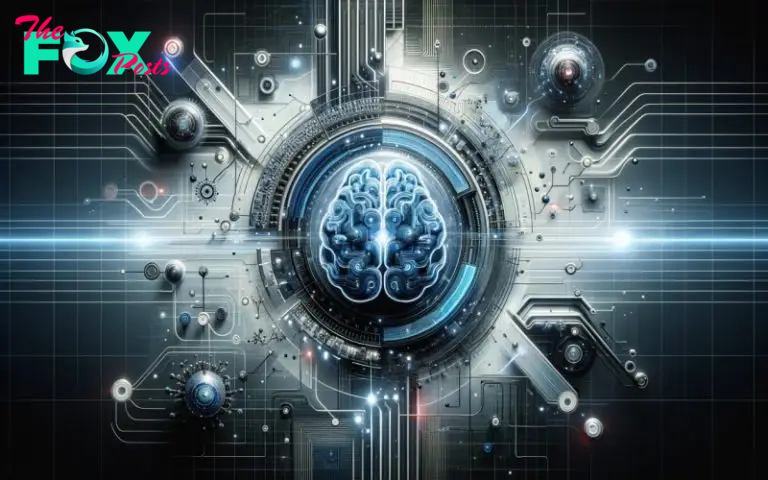As artificial intelligence continues to evolve, a new approach called Retrieval-Augmented Generation (RAG) is gaining attention for its ability to enhance how AI systems retrieve and generate information. By combining the strengths of information retrieval with natural language generation, RAG represents a significant leap forward in how AI can access, interpret, and communicate vast amounts of data—making it more accurate, context-aware, and responsive to user needs.
In this article, we’ll explore what RAG is, how it works, and why it’s set to transform fields like customer service, research, content creation and search engine optimisation.
What is Retrieval-Augmented Generation (RAG)?
Retrieval-Augmented Generation (RAG) is an advanced AI framework that combines two powerful components: retrieval models and generation models. While traditional AI generation models (like GPT-4) generate text based on training data, RAG introduces a retrieval step where the AI first retrieves relevant documents or information before generating a response. This retrieval layer allows the model to access real-time information stored in external databases or documents, increasing the relevance and accuracy of its responses.
Imagine RAG as an AI system with a powerful library at its fingertips. When a user poses a question, the AI retrieves pertinent information from a repository, such as articles, databases, or documentation, then generates a response that directly answers the query. This combination makes RAG especially useful in dynamic environments where up-to-date, accurate information is crucial.
How RAG Works: Breaking Down the Process
At a high level, RAG operates in two main steps:
- Retrieval Phase: When a query is presented, RAG’s retrieval model searches through a large collection of documents or data sources, selecting the most relevant pieces of information. This is akin to a specialised search engine that only looks for the most relevant materials related to the query.
- Generation Phase: Once relevant information is retrieved, RAG’s generation model uses this data as context to produce a coherent, informative response. This model is fine-tuned to incorporate the retrieved information, allowing it to create accurate answers or summaries.
By separating retrieval and generation, RAG optimises both steps, resulting in more informative and contextually accurate responses than a generation-only model. In practice, this means that RAG can answer complex questions or provide summaries of current information without the limitations of static, pre-trained data.
Key Benefits of Retrieval-Augmented Generation
1. Enhanced Accuracy and Relevance
With RAG, responses are not limited to information learned during training. Instead, RAG accesses live data from external sources, making responses more accurate, contextually relevant, and reliable. For example, in customer support, RAG can pull from updated product manuals, policies, or user guides to provide precise answers.
Implications for Businesses:
Businesses using RAG-powered AI can reduce misinformation and provide customers or users with up-to-date answers, enhancing trust and satisfaction.
2. Dynamic, Real-Time Responses
Unlike traditional models that rely on static datasets, RAG can incorporate current data, making it ideal for applications that require real-time information. For instance, in Healthcare, RAG could retrieve the latest research articles or medical guidelines to inform patient care recommendations accurately.
Implications for Users:
For end-users, RAG ensures that they’re receiving the latest, most relevant information possible, which is especially valuable in fast-changing fields or industries where accuracy is essential.
3. Greater Contextual Understanding
Since RAG retrieves relevant documents as context for response generation, it’s able to provide richer, more nuanced answers. Rather than generating broad responses, RAG can give users a detailed answer that incorporates specifics from relevant documents or sources.
Implications for Content and Research:
In research or content creation, this level of context means that writers, analysts, and researchers can receive AI-generated suMMAries, insights, and data that are directly relevant to their work.
4. Improved Efficiency in Handling Complex Queries
Traditional generation models struggle with highly specific or complex queries, but RAG can handle these more efficiently by retrieving targeted information. For example, in a legal setting, RAG could pull specific clauses from a contract or cite relevant case law before generating a response or summary.
Implications for Professional Fields:
RAG can save time and streamline workflows for professionals in law, finance, engineering, and other fields where specific, detailed information is essential.
Real-World Applications of RAG
RAG’s ability to combine retrieval and generation has already shown promise in several industries:
- Customer Support: By integrating RAG, companies can enhance customer support by providing precise, real-time answers. Instead of relying on static FAQs, a RAG-powered assistant can retrieve the latest product information or troubleshooting steps to offer immediate assistance.
- Healthcare and Medicine: Medical professionals can use RAG to retrieve the latest research articles, drug information, or clinical guidelines. This makes it possible to provide evidence-based advice to patients without manually searching through vast amounts of medical literature.
- Legal Research: In legal fields, RAG can retrieve relevant case law, statutes, or clauses to assist lawyers with research and case preparation, offering summarised insights based on up-to-date legal information.
- Educational Tools: RAG can enhance educational platforms by retrieving relevant material for students and generating summaries or explanations based on the latest available information.
Challenges and Considerations with RAG
While RAG represents a major advance in AI-powered information retrieval and response, it also introduces unique challenges:
- Data Quality and Source Reliability: Since RAG retrieves information from external sources, the quality of responses depends on the quality of the data it accesses. Poorly curated data can result in inaccurate or misleading answers, so organisations using RAG need to ensure that data sources are reliable.
- Computational Complexity: RAG’s dual-step process requires more computational resources than standard generation models. The retrieval process, especially in large databases, demands significant processing power, which can impact performance and cost.
- Privacy and Security: For applications that involve sensitive information, such as healthcare or finance, ensuring data privacy and compliance with regulations like GDPR is essential. RAG implementations must be designed with robust security protocols to protect sensitive data.
The Future of RAG and AI-Powered Information Retrieval
The use of Retrieval-Augmented Generation is expected to grow as AI models become more integrated into everyday tools and services. As more organisations adopt RAG, we can anticipate further refinements in how AI retrieves, processes, and presents information.
Looking forward, the future of RAG could include:
- Greater Integration with Knowledge Bases: RAG models will likely become more integrated with proprietary databases, creating highly specialised applications for industries like law, medicine, and academia.
- Improved Efficiency and Speed: Advances in computing will likely reduce the resource demands of RAG, making it more accessible for a broader range of applications.
- Customised AI Experiences: As RAG matures, we may see AI experiences that are even more tailored, offering responses based on personal preferences, past interactions, or specific professional needs.
Final Thoughts
Retrieval-Augmented Generation is a groundbreaking innovation that combines the strengths of retrieval and generation to create AI systems capable of producing timely, accurate, and contextually rich responses. By pulling from Bing’s index or other comprehensive databases, RAG represents a new era in AI-driven information retrieval, promising to transform everything from customer service and research to content creation and more.
For Businesses, professionals, and users, RAG offers an advanced tool that improves accuracy, saves time, and enhances the way information is accessed and used. As RAG continues to evolve, it will likely become an indispensable Technology across industries, reshaping the future of AI-powered interaction.











































